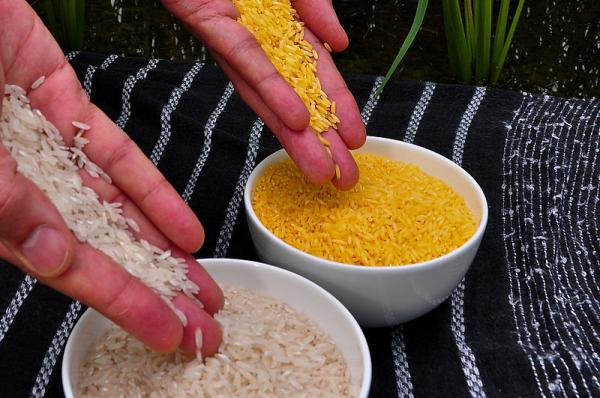Genetically modified foods: let the science speak

Genetically modified food has become a highly politicised, emotional issue with heated arguments and accusations between those for and against their use.
South Africa produces GM crops like maize, soybean and cotton. These crops have been modified by adding a gene that gives the plant resistance to a herbicide or pest. This gives the crop a better chance of growing and hopefully improving its yield.
The promise of genetically modified crops is that any gene can be introduced to give a plant better characteristics. Not only are disease or drug resistant plants being grown, but others are being developed to produce nutrients that might be lacking in staple foods - like vitamin A in Golden rice.
Because we eat these crops, there are concerns about their safety. Accusations of foul play by big corporations and of guerrilla tactics by anti-GM groups have polarised this issue in the media. Most of these concerns are blown out of proportion - fed by the idea that our interference with genes is unnatural.
Farmers have been interfering with genes for centuries by cross-breeding plants to improve crop yield or resistance against diseases and pesticides. The difference with GM foods is that this process is highly selective. Rather than crossing two plants and hoping that a mixing of all their genes will bring out a better result, a single gene gets changed in a GM plant. Scientists who make GM plants also check that the gene is in the right place, that it works correctly and that it does what it is designed to do. This means that GM plants are often better understood than traditionally farmed crops.
The concerns of those opposed to GM foods is that this might decrease the diversity of the crop, that GM plants are grown in a way that makes them less healthy with less nutrients than their unmodified versions. The two biggest concerns are the safety for animals and humans who eat the crops and the environmental safety of the crop itself: can the new gene spread to other plants?
There are strict regulations in place for growing and testing GM plants. They have to be grown alongside the unmodified version and both have to be compared to see if their nutrient content matches and whether there are any toxins in the GM ones. Two reviews that were published this year looked at the scientific evidence for the safety of GM plants. Both show that there is little evidence for GM crops being harmed by the new gene and that in the majority of crops the nutrient contents stays the same. It is less clear whether GM plants - and the new gene or the protein it produces - are safe for animals or humans to eat. Tests done on rats to see if a diet of GMOs have any harmful effects have shown that most are safe. The limitation of these tests are that they are only run for 90 days, which is not long enough to see the long-term effects.
The environmental concerns about GM crops are that plants can cross-breed with similar wild plants and spread genes. There is evidence that GM plants swap genes with unmodified crops and wild plants. Like any other type of agriculture, the effects of genes spreading are not very well understood.
A criticism of GM studies is that more independent assessments should be done rather than studies by the companies who produce and sell the GM seeds, which is often the case. These companies are not obligated to make their results public or to publish them in peer-reviewed journals. A recent statement by the European Network of Scientists questions the reliability of this data based on who is funding it and how strictly the studies adhere to the regulations for testing. They urge more stringent testing of the long-term and environmental effects of GM plants on both humans and animals.
Companies that develop and sell GM seeds file patents on these seeds. They justify this by claiming they need to protect their intellectual property so as to make it worth their while to invest in new technologies. The use of patents for GM plants is controversial because of the potential for abuse, with companies able to develop monopolies on seed supply and sue individuals for violation of their patent agreement. Activists tout examples of farmers being sued for holding over patented seeds for a second season and the use of terminator technology - producing sterile seeds that can only be used for a single season, forcing farmers to buy seed every year. Commercially available seeds do not use terminator technology, but the possibility is there for it to be developed. These potential abuses of GM foods mean that regulation, monitoring and transparency regarding their use is vital.
GM plants are not the only solution to improving our food supply, but another tool in our arsenal. Unbalanced media hype about their safety, supposed misuse and misleading ideas about how they work is drowning out the sensible, evidence-based studies into their potential.
The current evidence tells us that the GM foods in our supermarkets are safe to eat. However, we don’t fully understand the long-term effects and what effect GM plants will have on the environment. The safe use of GM food depends on scientific evidence, based on well conducted, reliable, independent studies and the sharing of these results in peer-reviewed journals.

This article is licensed under a Creative Commons Attribution-NoDerivatives 4.0 International License.


